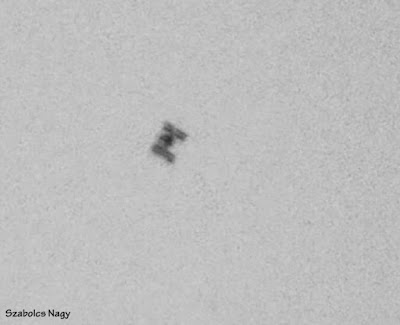 One of the rear occasions, when ISS was crossing the disk of Sun twice in a week time and twice at near perfectly clear sky. From London! :)
One of the rear occasions, when ISS was crossing the disk of Sun twice in a week time and twice at near perfectly clear sky. From London! :)For the first one it happened on the 17th of August - I had to drive up near M1 motorway. I did not have a scope with me sadly, I was working and just took a short break. Luckily I had my Canon 600D and a 75-300mm lens with me. At highest magnification, white light filter, this was the final result.
The second one ( 21st of August) was near Slough, sky was cloudy when I left home, but because ISS was only in a distance of 517 km, I decided to go whatever happens. You need to be in it to win it right :D
So packed up and hit the road. At my arrival to a randomly chosen location along the centerline clouds began to brake up and it was more a lightly scattered cloudy sky.


There was a patch of cloud 2 mins before the transit, but already saw that this might be really good to me as clouds were moving rapidly out of the way and clear spell was following afterwards. About half a minute before the transit it was bright and clear. Capture began and whooops there it was. A quick 0.68s transit.
Happy happy happy times.

Of course the last minute setting adjustment wasn't ideal, I should have had lower gain and higher shutter speed, the final result was a bit noisy. But it all does not matter. Every time I try to learn from my mistakes and let's not forget, an hour and a half before the transit, it all looked doom and gloom, so no room for complaining whatsoever...
 |
| Solar arrays are nicely visible |
Here is a video about the whole project, the original and half speed transit video, screenshots of the predicted transit using CalSky.


